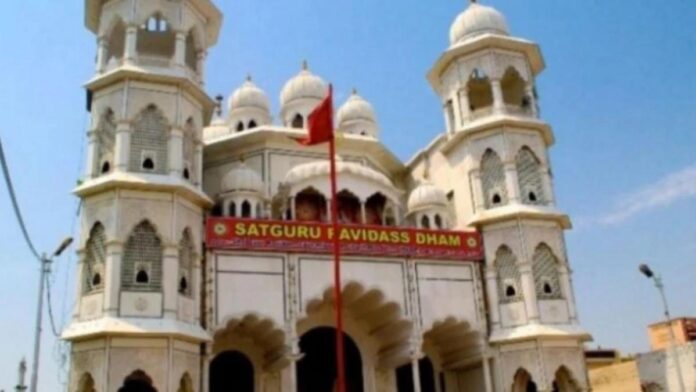After the Delhi Development Authority (DDA) demolished the Ravi Das temple in furtherance of the orders of the apex court, there has been a spur in the case. The apex court while giving the orders of demolition held that there has been a ‘serious breach’ by the Gurudas Jayanti Samaroh Samiti [GJSS] by not vacating the forest area, as ordered once before. While passing of the order, the Supreme Court had made it clear that one should ensure that ‘no law and order situation is created politically or otherwise’. It said that if the demolition of the temple is politicised, it will initiate contempt proceedings against those provoking protests and demonstrations.
However, even after the strong words by the Supreme Court, there were massive protests held in Delhi, Punjab and Haryana post the demolition. Soon after the news of demolition spread, the capital of the country saw people (mostly Dalits) from Punjab, Rajasthan, Haryana, Uttar Pradesh, Delhi and other states arriving at Delhi to participate in a protest. They protesters started their march from Ambedkar Bhawan in Jhandewalan to the Ramlila Maidan.
Background of the controversy:
Sant Ravidas, whose temple stood at the Tughlaqbad area in New Delhi is a spiritual leader worshipped by the Dalit community. His teachings were considered sacred by the Dalits and were also included in the holy book for the Sikha, Guru Granth Sahib. Therefore, apart from Dalits, even the Punjabis devotedly follow Sant Ravidas.

This is a 33 year old long controversy which is being fought between the Delhi Development Authority (DDA) and the Guru Ravidas Jainti Samaroh Samiti (GJSS). The subject matter of the ongoing conflict was the ownership of the land on which the temple was built. While the GJSS is claiming full ownership over the said land, DDA has been arguing that the land is a government land and was encroached by GJSS.
As per the documents brought on record in the court, the overall premises of the court consists of an area of 12,350 square yards, has twenty rooms, a hall and two samadhis. The litigation behan in the year 1986 when the samiti originally filed a a writ petition against the DDA. This resulted in the High Court filing a status quo 0j any further construction. November 5, 1992, the DDA undertook a demolition drive to raze some unauthorised buildings in the premises. The samiti moved court and a long legal battle over land ownership followed.
Appeal to the Supreme Court:
Thereafter, the matter went into appeal and has been settled by a recent order of the Supreme Court, where it has directed the parties involved in the said plea to come back with an amicable solution on a better location for the temple. The appeal before the Supreme Court stood on the grounds that the site is a pious one meant for prayers and has been there for the last 500 to 600 years. The petitioners had said that they were devout followers of Guru Ravidas and used to pray regularly at the site.
The plea before the Supreme Court is praying for the permission to rebuild the Guru Ravidas temple in Delhi’s Tughlaqabad forest area. While directing the parties to find ‘an amicable solution’, the Supreme Court also remarked that the sentiments of all people will be considered, but the law also has to be followed. The decision was passed by a bench comprising of Justices Arun Mishra and S Ravindra Bhat. Attorney General K K Venugopal remarked that the Centre has a revised offer, now offering 400 square meters, instead of the earlier offer of 200 square metre area for the temple.
This increase in land area for the temple has been done keeping in view the faith and sentiments of devotees. The bench has also directed the Centre to constitute a committee, within six weeks of the said decision, for overseeing the construction of the temple in the area earmarked for it. It had also directed that nobody will carry out any commercial activity in the area in and around the place earmarked for temple.
The top court also directed that persons who were arrested during agitations following the demolition of the temple be released on furnishing of personal bond.
On further hearing in this matter, the Centre had agreed to grant the prayer sought by the devotees of Guru Ravidas. The Centre therefore has agreed for the same site for the temple construction in Delhi, where it was earlier demolished in August- Delhi’s Tughlaqabad forest area. Appearing before the court, Attorney General KK Venugopal has remarked that the recommendation grating the same area, has been made to ensure peace and order in the matter.

